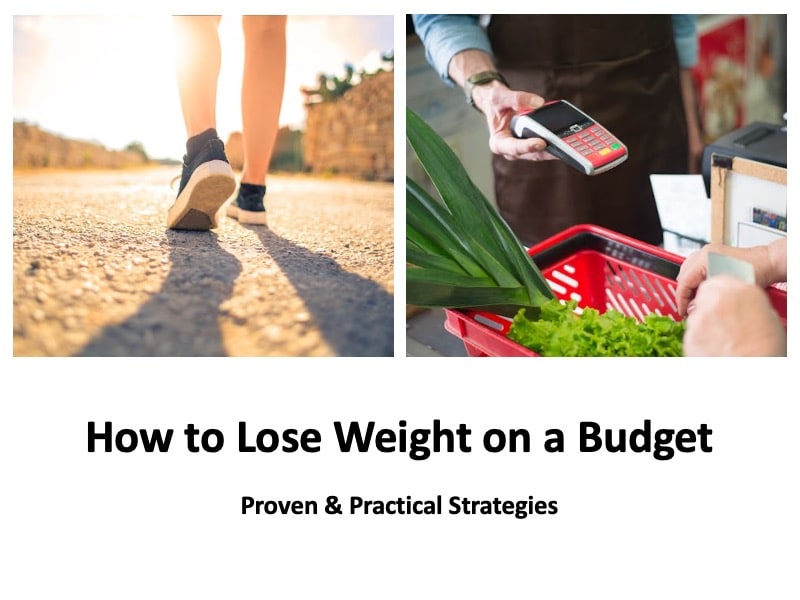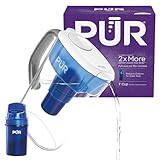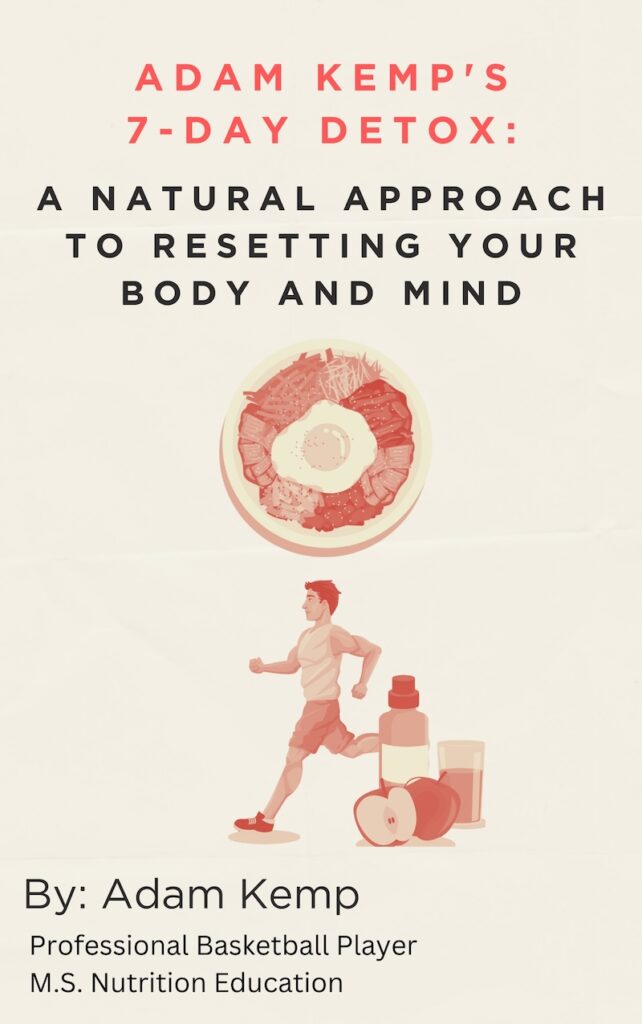How to Lose Weight on a Budget: Proven & Practical Strategies
If you’ve ever wondered how to lose weight on a budget without sacrificing your health or sanity, the truth is that sustainable weight loss is absolutely possible—with the right habits, smart planning, and a little creativity.
To lose weight, you don’t need a premium gym membership, name-brand supplements, or a $200 meal prep plan.
Sustainable weight loss isn’t about how much you spend—it’s about building smart, repeatable habits that work in your real life.
Throughout my professional basketball career across Europe, I’ve learned and experienced firsthand how to eat well, stay fit, and maintain a strong body without breaking the bank.
These are the same strategies I’ve used when living in small towns with limited food options, or during offseasons when money was tight.
Whether you’re a college student, a young parent, or just trying to save more each month, these tips will help you stay lean and healthy—on any budget.
How to Eat Healthy and Lose Weight on a Budget
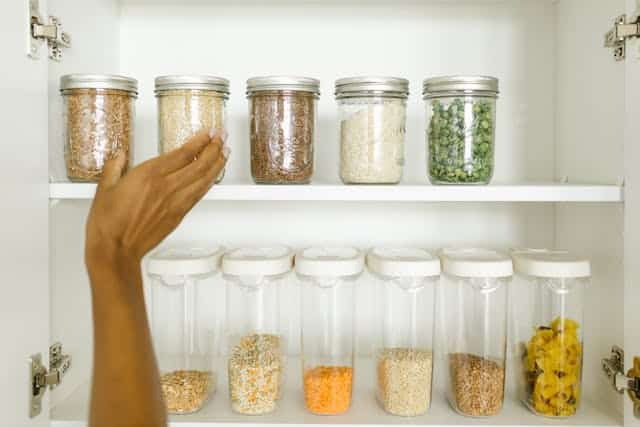
Eating healthy doesn’t have to mean spending more. In fact, some of the most nutrient-dense and fat-burning foods are also the most affordable—if you know where to look and how to use them.
Whether you’re trying to drop weight, build muscle, or just feel better day to day, eating well on a tight budget is absolutely possible with the right strategies.
As a professional athlete living and playing across Europe, I’ve learned how to fuel performance without overpriced supplements or boutique grocery stores.
These practical, cost-conscious nutrition tips can help you build a healthier body without draining your bank account.
Embrace High-Fiber, High-Satiety Staples
If you’re trying to lose weight, dietary fiber is probably the most important nutrient that you aren’t already tracking.
Foods like brown rice, oats, frozen vegetables, lentils, chickpeas, and beans are not only affordable—they keep you full longer.
High-fiber meals support gut health, reduce blood sugar spikes, and improve satiety, which means fewer cravings later in the day (Slavin, 2005).
Additionally, prebiotic fiber feeds the beneficial gut bacteria that regulate digestion, inflammation, and appetite.
Affordable foods like lentils, chickpeas, oats, and bananas are packed with prebiotics, helping you stay full longer and curb cravings without needing expensive supplements or snacks.
If you’re trying to stretch your dollar, base your meals on these ingredients first.
A bowl of oats with cinnamon and peanut butter costs less than a dollar and fuels you better than most “weight loss” bars.
Frozen Produce Over Fresh
Frozen fruits and vegetables are flash-frozen at peak ripeness, meaning they often retain more nutrients than fresh produce sitting on shelves.
Plus, they last longer and reduce food waste—ideal for budget-conscious shoppers.
Use them in stir-fries, smoothies, or soups.
They’re perfect for people who don’t shop multiple times a week, and they taste nearly as good as fresh options!
Spice Up Cheap Meals With Flavor
One of the biggest reasons people fall off “healthy” diets is food boredom.
A small investment in spices like turmeric, garlic powder, cumin, oregano, or chili flakes makes bland meals taste exciting and satisfying without added calories.
When your food tastes good, you’ll be more likely to stick with your plan.
Zero-Waste Broths and Meal Bases
Save your vegetable scraps (onion peels, garlic ends, celery leaves) in a bag in the freezer. When it fills up, boil with water and salt to make homemade broth.
It’s free, flavorful, and packed with nutrients—perfect for soups, rice, or sauces.
“Cook Once, Eat Twice” Meal Strategy
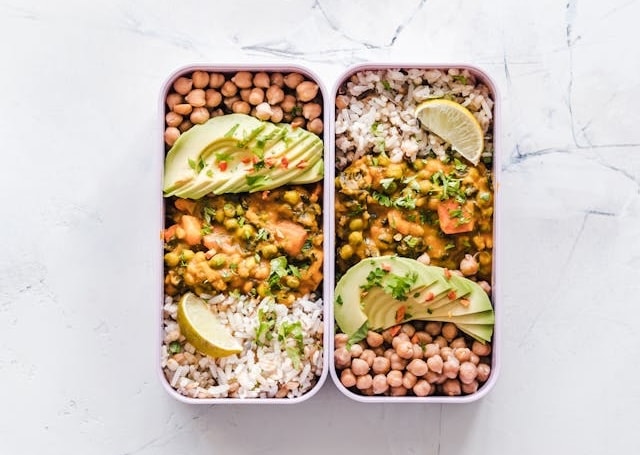
Meal prepping is one of the most effective kitchen hacks because it saves money, reduces stress, and improves dietary consistency—all at the same time.
The “Cook Once, Eat Twice” method is especially valuable because it allows you to batch-cook core ingredients and creatively reuse them across multiple meals, so you’re not eating the same thing every day, but you’re not starting from scratch either.
When you prepare meals in advance, you avoid the financial trap of last-minute takeout or convenience foods, which are often overpriced and nutritionally underwhelming.
Prepped meals also reduce food waste, since you plan ingredients intentionally instead of letting perishables sit forgotten in the fridge.
Whether you’re cooking lentils, roasted vegetables, ground beef, or shredded chicken, the key is to build a strong base once—and then mix and match with different spices, grains, and sauces throughout the week.
It’s budget-friendly, time-efficient, and keeps your nutrition on point without burnout.
Drink Water as Your Primary Beverage
One of the simplest and most effective ways to lose weight on a budget is to make water your go-to drink.
It’s calorie-free, supports digestion and metabolism, and helps regulate appetite—making it an essential part of any healthy weight loss plan.
Choosing water over soda, juice, or other sugary drinks not only reduces your daily calorie intake but also significantly cuts down on unnecessary spending.
A single soft drink may cost $1–$3, while tap water is virtually free. Over time, swapping these beverages can save you hundreds of dollars per year.
If you prefer filtered water, investing in a Brita or Pur water filter is a one-time cost that pays for itself quickly.
These filters provide clean, better-tasting water at home and eliminate the need to buy bottled water—another budget-friendly move that supports both your health and the environment.
Last update on 2025-04-15 / This article includes affiliate links/Images via Amazon Product Advertising API. I may earn commissions on purchases made through these links.
Hydration also plays a direct role in weight loss.
People often mistake thirst for hunger, leading to overeating (Mattes, 2010).
Drinking a glass of water before meals may help reduce portion sizes and improve satiety, making it easier to stay in a calorie deficit without feeling deprived.
For anyone looking to lose weight on a budget, drinking water consistently is one of the most overlooked—but powerful—strategies for saving money and supporting fat loss.
Cashback Grocery Apps
Apps like Ibotta, Rakuten, and Fetch Rewards offer small kickbacks on everyday food purchases. These rebates can add up over time, especially if you shop smart.
They’re easy to use and don’t require you to change your shopping habits—just scan your receipt and earn.
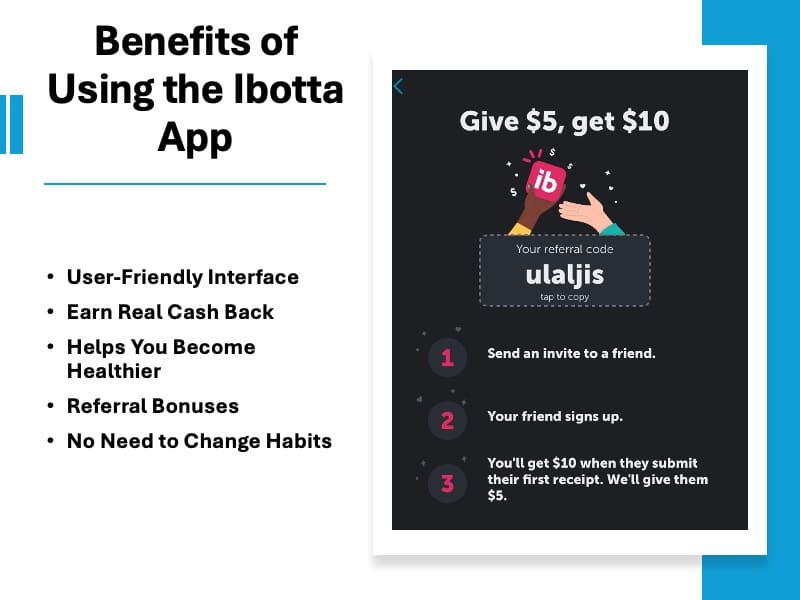
If you’re new to the app, using my Ibotta referral code (ulaljis) will give you an instant $5 bonus when you scan your first receipt and help you start saving money right away.
As soon as you have built up $20 in rewards, you can cash out to your PayPal or bank account!
Use an App to Check for the Best Prices on Groceries
Flipp is a powerful, free tool that helps you eat healthy and lose weight on a budget by making grocery shopping more strategic and cost-effective.
Instead of randomly shopping or waiting for in-store surprises, Flipp lets you plan smarter by showing weekly deals from over 2,000 stores in your area—all in one place.
By entering your postal code, you’ll instantly unlock flyers and digital coupons tailored to local retailers.
This helps you find the best prices on nutritious staples like fresh produce, whole grains, frozen vegetables, lean proteins, and pantry essentials.
Whether you’re looking to stock up on oats, lentils, or frozen berries, Flipp makes it easier to compare prices and save 20% or more every week.
Store Brand Products Are Often Identical
Private-label products often come from the same factories as name-brand items—but without the fancy packaging or marketing.
Compare nutrition labels and ingredient lists.
You’ll usually find minimal differences in things like oats, frozen veggies, rice, and peanut butter.
Free Meal Planning & Tracking Apps
Tools like MyFitnessPal, Lose It!, or Cronometer helps you understand your food intake and stay consistent.
Use them to track meals, plan ahead, or review what’s working without spending anything.
Simplicity helps maintain progress long-term.
One-Pan Meals = Lower Utility Bills & Less Cleanup

One-pan meals reduce electricity use, water for dishwashing, and time spent cooking.
Plus, they’re ideal for combining carbs, proteins, and veggies into simple, balanced meals.
Try one-pan chicken and frozen veggies over brown rice, or lentils and potatoes roasted with olive oil and curry powder.
Free and Low-Cost Fitness Options That Help You Lose Weight on a Budget
You don’t need an expensive gym membership to build strength, burn fat, or improve your health.
In fact, some of the most effective ways to lose weight cost little to nothing—and can be done right from your home or neighborhood.
If you’re looking to get fit without going to the gym and paying for a gym membership, these free and low-cost fitness options will help you stay consistent, save money, and see real results.
Walking Is Still Underrated
Walking is a powerful yet overlooked tool for fat loss.
A 30-minute walk after dinner helps regulate blood sugar, improve digestion, and increase your daily calorie burn without impacting your joints (DiPietro et al., 2013).
Even during my professional basketball seasons, I use walking to help with recovery and conditioning.
It’s simple, free, and incredibly effective.
Another powerful strategy to amplify the fat-burning effects of walking is fasted walking—taking a walk first thing in the morning before eating.

This approach taps into stored fat for energy and can be especially useful for those looking to burn fat efficiently while sticking to a budget-friendly routine.
Even a 20–30 minute fasted walk can jumpstart your metabolism and enhance insulin sensitivity throughout the day.
Hiking is another excellent option—it’s essentially an upgraded walk.
It combines the benefits of steady-state cardio with the strength-building demands of uneven terrain and elevation.

Hiking also gives your mind a break, which supports stress reduction and long-term habit sustainability.
And if you live near trails or parks, it’s completely free.
Whether you’re walking after dinner to support digestion or hiking fasted in the morning to tap into fat stores, these movement habits are budget-proof ways to promote fat loss, improve mood, and build lasting fitness.
Resistance Bands > Gym Memberships
A set of resistance bands can give you a full-body workout for under $30—and they last for years.
Bands are lightweight, portable, and ideal for strength training without needing expensive equipment.
You can build muscle and burn fat with bands using squats, rows, shoulder presses, and glute kickbacks—all from home or a park.
Buy Used Fitness Equipment for Your Home

One of the smartest ways to lose weight on a budget is to build a simple home gym using secondhand equipment.
Instead of spending hundreds on brand-new gear, you can often find high-quality used fitness equipment, such as dumbbells, resistance bands, kettlebells, or even cardio machines, for a fraction of the cost.
Check platforms like Facebook Marketplace, Craigslist, OfferUp, or local thrift stores for deals.
Many people sell barely-used fitness equipment after a short burst of motivation, which means you can score near-new items at deep discounts.
This not only saves you money upfront but also helps eliminate recurring gym membership fees.
With just a few key pieces—like adjustable dumbbells or resistance bands—you can perform full-body strength training workouts at home that rival most commercial gym routines.
For anyone trying to lose weight on a budget, investing in used gear is a one-time cost that pays off with convenience, flexibility, and long-term savings.
Train Outside: Parks, Benches, and Stairs
I love exercising outdoors, and playground workouts have been a staple in my routein for years.
Not only are they effective for burning calories and building strength, but they help you become more creative, as the fresh air and sunlight are great for soaking up vitamin D and reducing stress.
Stair sprints, bench dips, step-ups, and pull-ups on monkey bars became staples in my outdoor workout routines.
Outdoor training is effective, energizing, and completely free.
It’s a great way to build discipline and creativity with your workouts.
Healthy Weight Loss Habits That Won’t Break Your Budget
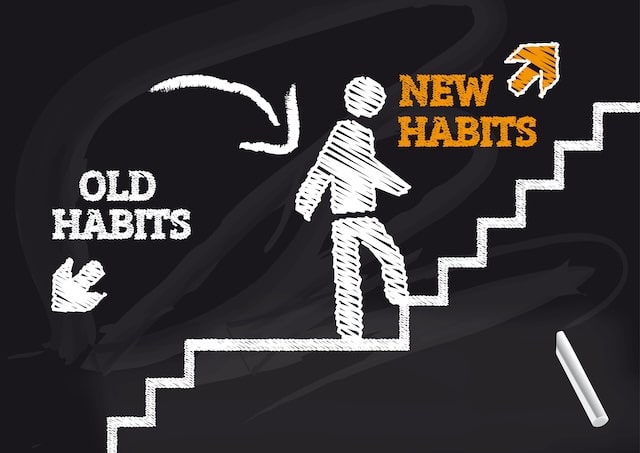
To lose weight on a budget, you need more than just cheap meals and free workouts—you need a healthy mindset that supports consistency and long-term progress.
Building mental resilience, emotional balance, and daily structure can dramatically improve your chances of reaching your goals without spending a dime.
These free healthy habits for weight loss support both mental wellness and sustainable fat loss, helping you stay on track regardless of your financial situation.
Small Tools, Big Wins
A $5 whiteboard or free habit tracking app can help you stay consistent and intentional.
Write down goals, track workouts, or log meals—visual feedback boosts accountability.
SMART goals are exceptionally beneficial for helping you stay on track and build confidence.

By utilizing SMART goals, you can consistently accomplish smaller goals while still staying on track to get your dream body with long-term goals.
I’ve used daily habit boards during offseasons to track training, nutrition, and even sleep.
You don’t need complexity—just clarity.
Use the “10-Minute Rule” to Beat Cravings
When cravings strike, pause for 10 minutes and do something else—take a walk, drink water, call a friend. More often than not, the urge passes.
This technique helps reduce emotional and impulsive eating without the guilt that comes from strict restriction.
“No-Spend Pantry Challenges”
Pick one week a month where you eat only from your pantry or freezer.
Not only does this save money, but it resets your eating habits and reduces reliance on convenience foods.
Many of my favorite easy, healthy dinner ideas come from these “pantry days, as I’ll mix canned tomatoes, lentils, rice, and whatever spices I have left.
Practice Mindfulness
Mindfulness teaches you to slow down, stay present, and avoid impulsive decisions—especially around food.
Practicing mindful eating can help you control portions, reduce cravings, and identify emotional eating triggers without relying on restrictive diets or expensive coaching.
Techniques like deep breathing, walking meditation, or simply eating without distractions can help you develop a healthier relationship with food.
If your goal is to lose weight on a budget, mindfulness offers a powerful, cost-free way to align your actions with your goals.
Use Self-Compassion
Self-compassion helps you recover faster from setbacks, which is critical when you’re working toward weight loss without external help.
Rather than punishing yourself for slip-ups, this mindset keeps you focused on long-term habits and encourages positive behavior change.
When you’re trying to lose weight on a budget, it’s easy to get discouraged by slow progress or limited options.
Speaking to yourself with kindness—as you would to a friend—helps you stay grounded and motivated, even during challenging times.
Prioritize Sleep
Getting enough quality sleep is one of the most overlooked tools for weight management.
Poor sleep disrupts hunger hormones, increases cravings, and leads to low energy levels that make it harder to exercise or prepare healthy meals.
To lose weight on a budget, build a consistent sleep routine.
Go to bed and wake up at the same time each day, avoid screens at night, and try calming activities like stretching or journaling before bed.
Sleep is free—and it’s one of your strongest allies in burning fat and staying consistent.
Track Your Progress to Stay Accountable
Progress doesn’t have to be measured with expensive apps or devices.
Research shows that keeping a simple journal of your meals can double your weight loss results.
Keeping a workout log book and tracking your habits are excellent ways to track other aspects of your life as well.
When you’re trying to lose weight on a budget, journaling helps you stay accountable and focused—especially when motivation dips.
Writing things down gives you a clear picture of your growth and reminds you that every small win matters.
Final Thoughts: Utilizing the Best Ways to Lose Weight on a Budget
Losing weight on a budget isn’t just possible—it’s often more sustainable.
You learn to rely on habits, systems, and intention, rather than hype and expensive shortcuts.
Whether you’re an athlete, a busy parent, or someone starting their health journey for the first time, these strategies are designed to help you win—without wasting money.
Your body doesn’t care if your protein came from grass-fed steak or lentils.
What matters is that you show up consistently, eat with purpose, and move often.

